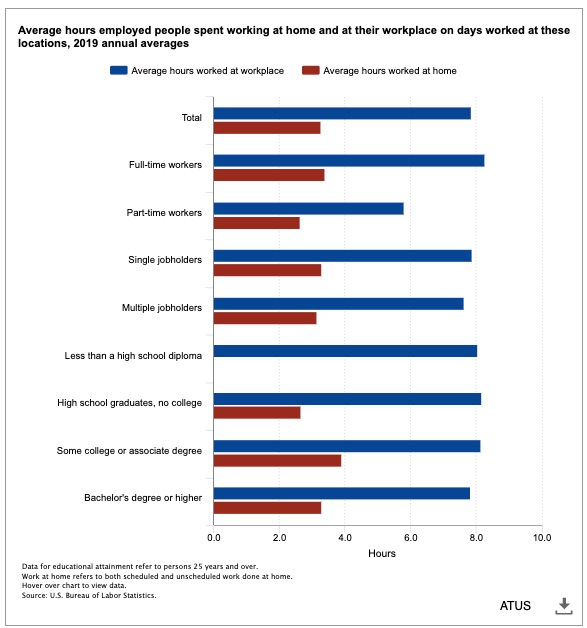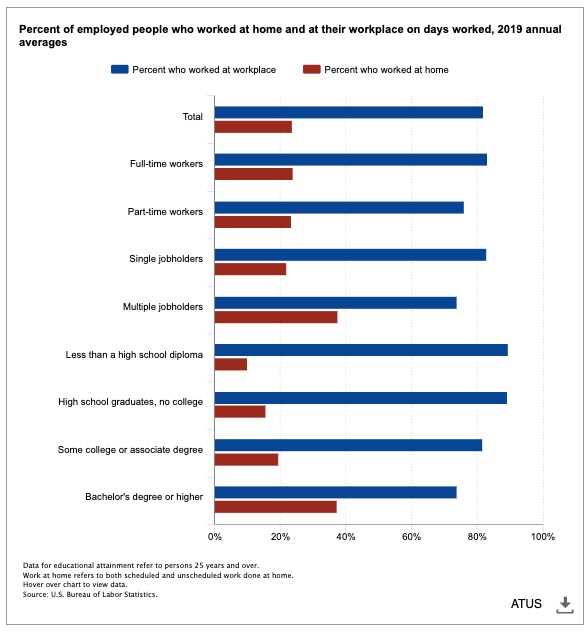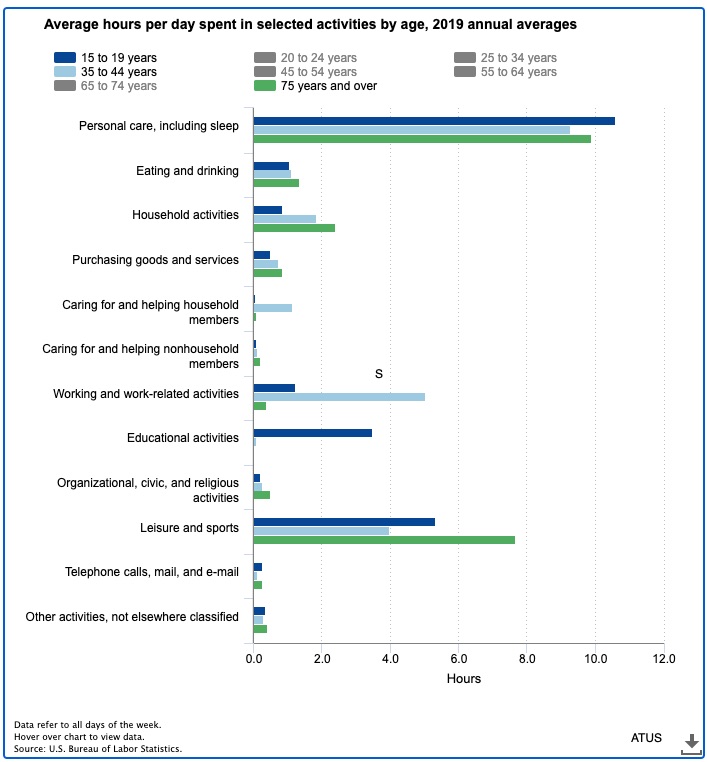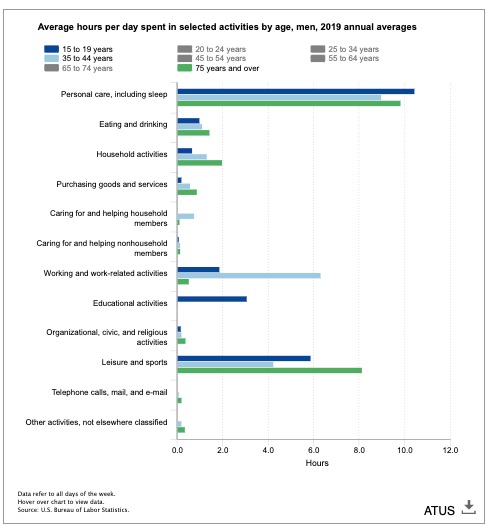Like always, the American Time Use Survey (ATUS) was released during June. But not like always, it brings back memories of what life used to be like before the pandemic.
How We Used Our Time
At Work:
The ATU tells us how we used our time during 2019.
The biggest difference between 2019 and 2020 is surely how much we work at home. In 2019, 82 percent of those of us who work did it at the workplace.
Full time workers were in the workplace for an average of 8.28 hours:
Meanwhile, the vast proportion of workers did the job away from home:
At Home:
Next, we can see how work fits into our entire day. When the data is divided by age, we wind up with teens (15-19 years old) spending the most time (10.6 hours) each day on personal care. However, it’s the elderly, who have the time (7.67 hours) for leisure and sports:
As you might expect, gender also can define how we use our time. Displaying their responsibilities, a man’s time is occupied less by household activities and caring for household and non-household members. Then, with that extra time, they were engaging in more sports and leisure than women:
Men:
Women:
Our Bottom Line: Land, Labor, and Capital
When we observe the impact of working remotely, we are also looking at how our factor recipes have changed. A factor recipe is composed of the three factors of production–land, labor, and capital–from which all goods and services are made. Because of the pandemic, our factor recipes changed.
In a July 2020 NBER paper, researchers used meta-data across 21,478 firms, 3,143,270 users, and 16 countries to determine the impact of working from home. Without one centralized workplace, we had to adjust how we communicated.
As we would expect, the workday had indeed changed from a pre-pandemic average of 8.28 hours. Longer by 48.5 minutes, the day also included more meetings and emails. However, the meetings were shorter, occupying less total time during the day than at the workplace.
The net result was more synchronizing. We did more together and less one-on-one communication. Because of this contact, we might also have retained our connection to the organization.
However, returning to where we began, we can hypothesize that working remotely reshuffled the work/leisure patterns and activities that are typical in annual American Time Use Surveys.
My sources and more: While most of my facts came from the 2020 American Time Use Survey, I did take a look at this paper and the WEF.
Our featured image is from Pixabay.











